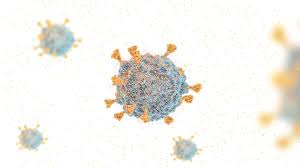Talk Sunburns

Later life effects of harmful sun exposure.
People nowadays are very conscious about their skin and beauty. The bulk of skincare products are available in the market. But, people need to be aware of the main culprits that are causing damage to their skin. We can prevent this damage by reducing the exposure from these culprits. Today, we’ll discuss the long term effects of UV radiation on your skin.
Sunburn
When ultraviolet B radiation hits the skin’s surface, it causes the death of the skin cell by damaging and breaking the micro RNA of the cells. The neighbouring cells react to this damage and cause inflammation at the site by the series of reactions. This compensatory mechanism allows the skin to heal by removing the dead and mutated cells from the skin. This whole process is called sunburn, which is the body response to ultraviolet radiation from the sun. It appears on the skin in the form of itching, erythema, peeling and blisters. Sunburn seems to be a short term effect of overexposure to the sun. It leaves unwanted long term damage to the neighbouring cells and becomes the risk for developing skin cancer, especially melanoma.
Tanning of the skin.
UV radiations leave your skin to tan. When you go under the sun for too long without covering your body or applying sunscreen, your body starts getting tan. It is a protective mechanism of the body against harmful UV radiation. What happens is, UV radiation stimulates the melanocytes in the skin to start the production of melanin, which is a pigment that gives brown colour to your skin. In this way, our body creates a shield against UV radiation. Light skinned people do not have enough melanocytes in their skin, so they are more prone to sunburn.

Skin cancer
Skin cancer is the primary concern in the United States, being the most common cancer. The two most common types are melanomas and non-melanomas. Each year, 3.5 million skin cancers are diagnosed as non-melanomas and consists of squamous cell carcinoma and basal cell carcinoma. Luckily, non-melanomas do not metastasize into the surrounding areas and are easily treatable.
Whereas, Melanomas has a high mortality rate and can metastasize to surrounding skin areas. It can result from dangerous sunburn and sun exposure.
High energy UV rays penetrate deep into the skin and can cause damage to the DNA and chromosomes of the skin cells and causes a permanent mutation in genes such as the TP53 gene. These cells start to divide rapidly without any restrictions.
Damage to the eyes.
Long term exposure to the eyes can increase the risk of cataracts and causes permanent damage to the retina, ultimately leading to blindness. So, it is advised to wear sunglasses while going under the sun.
Wrinkling of the skin.
UV radiations can cause damage to the collagen and elastin, the building blocks of the skin. Our skin no longer becomes flexible, sagging and wrinkling of the skin starts. Studies have shown us that 80% of the wrinkling of the skin is due to damage done by UV radiations.






